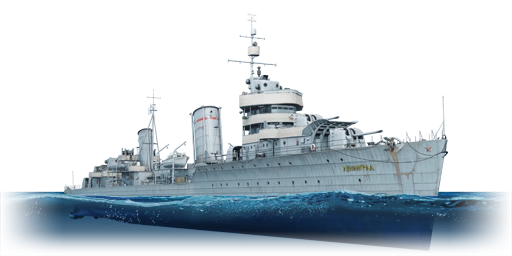The Leningrad was a Soviet Leningrad-class destroyer leader built in the 1930s as the first of six ships. She was laid down on 5th November 1932 and commissioned on 5th December 1936. The design was inspired by the French Vaquelin-class destroyers, as the Soviets wanted to built similar ships on their own. Due to the uneven weight distribution, the ships were top-heavy and had poor seaworthiness in rough seas. After the start of the Winter War on 30th November 1939, Leningrad and her sister Minsk bombarded Finnish positions on Saarenpää Island. She conducted the same mission several times and during these missions, she was badly damaged by the ice and underwent repairs until May 1941. At the end of August 1941, she helped evacuate personnel from Tallinn and then shelled the advancing German troops in the Leningrad area. On 9th November, while en route to Hanko from Kronshtadt, a mine exploded in her paravane, causing heavy damage to her machinery. After the repairs, she resumed performing shore bombardment missions in the Leningrad area before the siege of the city was lifted in 1944. During the 1950s, she underwent modernization. She was reclassified as a training ship in 1958, converted to a floating barracks in 1960, and her hulk used as a target in 1962, during which she sunk.
Leningrad was introduced during Update 1.85 "Supersonic" as part of the 2019 Sea Voyage event. As with all 1930s Soviet designs, Leningrad uses manually traversed turrets causing low traverse speed, making engaging different targets difficult. Another issue shared by nearly all destroyers are the magazines and their placement above waterline without any armour protection often leading to fatal explosion when hit. On the other hand, Leningrad's very high top speed allows her to easily close distance to enemies for torpedo runs with her fast albeit short-ranged torpedoes.









 2 x (295 / 600) %
2 x (295 / 600) % 
 2 x 160 %
2 x 160 % 
